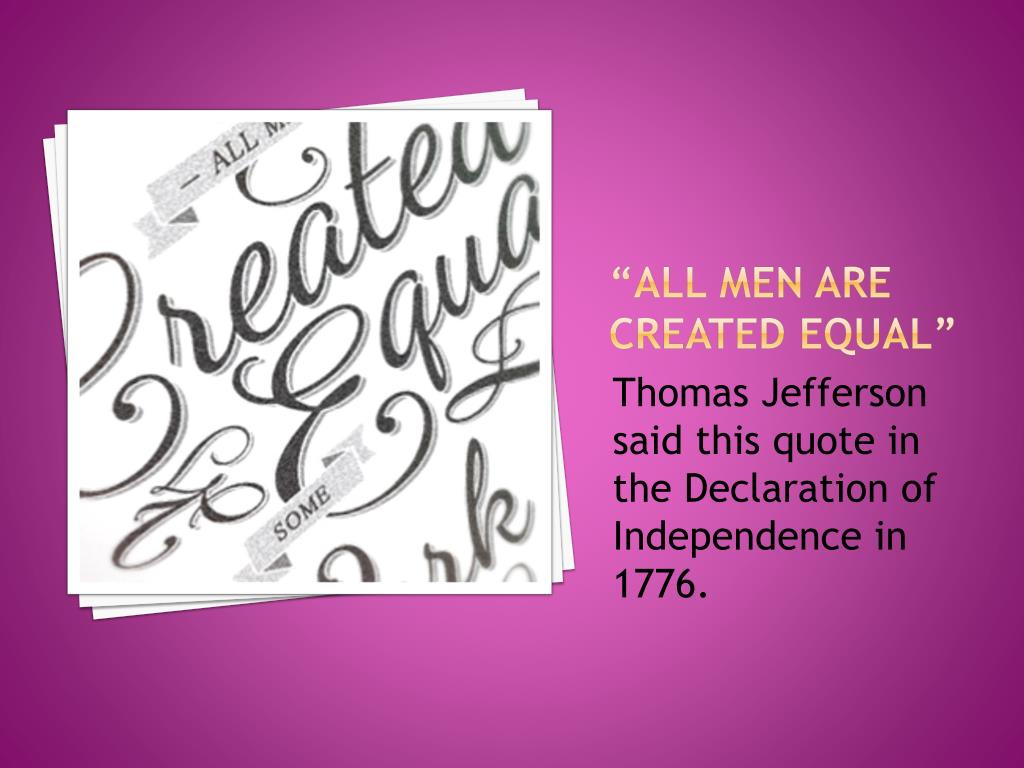


Seen within its original context, however, it is a model of subtlety, nuance, and implication that works on several levels of meaning and allusion to orient readers toward a favorable view of America and to prepare them for the rest of the Declaration. Taken out of context, this sentence is so general it could be used as the introduction to a declaration by any "oppressed" people. When in the Course of human events, it becomes necessary for one people to dissolve the political bands which have connected them with another, and to assume among the powers of the earth, the separate and equal station to which the Laws of Nature and of Nature's God entitle them, a decent respect to the opinions of mankind requires that they should declare the causes which impel them to the separation. The introduction consists of the first paragraph-a single, lengthy, periodic sentence:
#ALL MEN ARE CREATED FULL#
Because space does not permit us to explicate each section in full detail, we shall select features from each that illustrate the stylistic artistry of the Declaration as a whole. The text of the Declaration can be divided into five sections-the introduction, the preamble, the indictment of George III, the denunciation of the British people, and the conclusion. By approaching the Declaration in this way, we can shed light both on its literary qualities and on its rhetorical power as a work designed to convince a "candid world" that the American colonies were justified in seeking to establish themselves as an independent nation. 1 This essay seeks to illuminate that artistry by probing the discourse microscopically-at the level of the sentence, phrase, word, and syllable. Although many scholars have recognized those merits, there are surprisingly few sustained studies of the stylistic artistry of the Declaration. As Moses Coit Tyler noted almost a century ago, no assessment of it can be complete without taking into account its extraordinary merits as a work of political prose style.

The Declaration of Independence is perhaps the most masterfully written state paper of Western civilization. and that's what makes him a subject that we can't really, I think, do without.The Stylistic Artistry of the Declaration of Independenceīy Stephen E. I don't think there's anybody in the founding generation who embodies that so well. "A lot of Jefferson's contradictions are alive in us. "The fascinating thing about Jefferson is that he, in some ways, embodies the country," she says. And yet these very same words - affirming the equality and dignity of all - were written by a man who owned hundreds of slaves, and fathered six children by an enslaved woman, Sally Hemings.įor historian Annette Gordon-Reed, the contradictions embedded in Jefferson's life are "a window into us, into who we are as Americans." "We hold these truths to be self-evident, that all men are created equal." These words, penned by Thomas Jefferson more than 240 years ago, continue to inspire many Americans. Thomas Jefferson owned hundreds of slaves, yet he also wrote that "all men are created equal." How did he square the contradictions between his values and his everyday life?


 0 kommentar(er)
0 kommentar(er)
